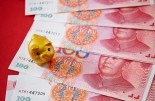BNY Mellon: China Update
BNY Mellon: China Update

By Neil Mellor, Senior Currency Strategist, BNY Mellon
- Efforts to lift the economy have been extraordinary
- The jury is out on their efficacy
- Fears could fester over the longer term implications
It is to risk stating the obvious to note that China’s efforts to mitigate its economic slowdown have been quite extraordinary. In March, the government slashed taxes for manufacturing by CNY 2 Trn – measures that were subsequently complemented by VAT cuts and a change in the tax code that could feasibly reduce the corporate / households' burden by CNY 1.02 Trn, or 1% of GDP.
Yet it was the government-directed explosion in credit that dominated recent headlines: total social financing grew by a net CNY 2.86 Trn in March alone – the equivalent in size to the Polish economy – with banks issuing perpetual bonds and local authorities, with designs on fresh infrastructure, issuing debt at a record pace in the first three months of year.
And all of this raises two questions: what will it ultimately cost and is it working?
PMI data – both Caixin and official - pointed to the resumption of very modest growth in March; but this, some highly volatile trade data and solid home prices figures aside, there has been no substantial evidence with which to answer the second of these questions. Certainly, in view of the uncertainty, Q1 GDP data published tomorrow could well have a marked influence on prevailing sentiment.
Yet in the absence of a sustained return on outlays, there is every chance that the first question above will weigh more on sentiment. It is quite clear that Beijing’s efforts are suffering from diminishing returns: in the decade or so prior to GFC, China’s incremental capital ratio – the nominal net increase in fixed investment required to lift GDP - ranged from 2-4. But in 2019, the ratio stands at 13.
Put another way, the days of quick-fix stimulus are gone and China is in new territory, with forward momentum demanding staggering levels of support. Overall debt has quadrupled in seven years (to 330% of GDP); and whilst the US created 58% of GDP in new credit in the five years prior to the GFC, China generated 139% in new loans in the five years that followed. Suffice it to say, that figure is somewhat larger in 2019 and loan quality has suffered accordingly.
The FT cites evidence to suggest that in 2018, some banks in Henan province recorded 40% of their loan books as bad debt. Slowing growth and spiralling credit point to a growing incidence of such risks, and the IMF has noted that in 43 cases worldwide of ‘strong’ credit growth (i.e. the ratio of credit to GDP grows more than 30% over five years), only five cases ended up without a significant slowdown or a financial crisis.
Enthused one day by the extraordinary stimulus rolled out in China, gripped with fears for its efficacy the next: investor sentiment could well become more volatile as China delves further into new territory.








